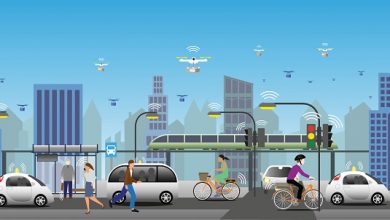Mobility sector rejig – future of shared and smart mobility

Since 2010, according to McKinsey, investments in mobility companies have reached $84 Billion in the US, $51 Billion in China and $34 Billion in the UK. This is driven by huge growth potential presented by increasing passenger miles, new transportation modes (e.g. bike and e-scooter rentals) and evolving customers’ travel needs. The mobility sector as a whole is undergoing significant changes. Particularly, the road transport that makes up roughly 3/4th of total miles travelled has been at the forefront of the changes. This article broadly covers new mobility methods, mainly shared and smart mobility. It elucidates their scope along with other newly introduced mobility concepts and shows comparison of value proposition with other travel modes. Besides, the article explains the impact that the factors both external and internal to the industry are having on shared and smart mobility. Finally, the article touches upon the key success factors and examples of possible new revenue models for actors in the newly developing ecosystem.
So many new mobility terms!
Over the last decade many new terms such as shared mobility, future mobility, clean mobility, micro mobility and smart mobility have been coined to refer to specific travel means. They are not mutually exclusive and boundaries are often very blured.
- Shared mobility refers to mobility that involves sharing of resources (vehicle space or the vehicle itself)
- Future mobility usually refers to connectivity, electrification and autonomous driving
- Clean mobility refers to electrified mobility solutions that have low or no emissions
- Micro mobility refers to using light vehicles for short distances, particularly meant for travel within cities. These vehicles run on small batteries and operate at lower speeds (usually less than 25 km/h); examples include e-bikes and e-scooters.
- Smart mobility refers to a solution that makes door-to-door commute seamless and efficient for customers. Some features of smart mobility solutions include providing recommendations on the best itinerary that meets the customer’s travel needs, suggesting alternate itineraries in case of a disruption en-route or a sudden change in customer’s plans, and facilitating travel bookings.
Focusing on shared and smart mobility, let’s look at the below diagram in which a commuter’s travel from home to office is broken down into 4 segments:
- Segment A: Bus
- Segment B: Train
- Segment C: Ride sharing
- Segment D: e-Scooter sharing
Each segment on its own belongs to the shared mobility group.
Smart mobility enhances the door-to-door travel experience, taking into account the commuter’s preference for cost, time and convenience. For example, using the customer’s preference, it would calculate the most economical itinerary with fewer number of stops, less waiting time between each segment as well as convenient pick-up and drop-off points for both ride-sharing and e-scooter hire. Furthermore, as the smart mobility concept develops with the right players, we can imagine a customer buying a single ticket with a valid access code across all four travel segments, instead of paying separately for four trips.

Usually travellers are not very rigid regarding the means of travel, and their travel preference can vary based on the purpose of trips, and their personal circumstance and commitments. The traveller’s choice for travel mode typically hinges on one or more of the following:
- cost,
- travel time,
- convenience, and
- emissions (as customers are becoming increasingly sensitive towards environmental issues)
Personal example of give & take with different mobility options
To give you an image of diversity in travel options, let me share some data on each of the above criteria from my approximately 60 x 1,300 km round trips between Toulouse (southern city in France) and Paris over a period of 18 months. As shown in the graph below, I chose from 5 travel options, and below is a comparison of their key characteristics:
- cost of trip: I earned 27 € when I used my car and offered ride with fellow passengers, and I spent 150 € when I took train
- time of trip ranged between 3 hours to 7 hours

From a convenience point of view, each travel method had a different set of pros and cons as shown in below table:

Finally, as considerations for CO2 emissions are increasing, the below graph shows emission efficiencies across all travel modes.

External Forces Affecting the Mobility Sector
The Mobility sector has been under a lot of scrutiny from industry and non-industry players alike, as well as environmental groups, regulators, and ministries of industry, economy and environment. The below factors that are currently shaping the mobility sector directly or indirectly affect smart and shared mobility:
Increasing amount of travel: Between 2010 and 2020, total vehicle miles travelled globally increased by 10% to 3.25 Trillion miles 1. This trend will continue as transportation becomes more affordable, accessible and fit to more diverse purposes. Besides, in emerging economies such as India, China and Africa, travel needs will increase proportionately to the growth of middle class and their discretionary spending.
Regulations: In Europe, the eCall regulation is ensuring that all newly homologated models of passenger cars from April 2018 support connectivity. The emissions regulation that has exposed the industry to up to 34 Billion € 2 in penalties is driving uptake of electric cars. While these regulations have been big disrupters, smart and shared mobility will greatly benefit from them as both connectivity and electric cars fit very well with their value propositions.
Socio-economic dimension: Shared mobility and smart mobility solutions promise efficient commute. With low travel cost, they will be favourable solutions from customers’ economic consideration. Meanwhile, as customers are becoming sensitive to emissions and climate change issues, they are increasingly willing to decrease their CO2 footprints. As shared mobility options offer low emission commute, they resonate well with customers’ social responsibility viewpoint.
Innovations: There is a tremendous momentum in the industry today. On one hand advances in areas such as battery technology for electric vehicles, vehicle efficiency, connectivity, autonomous driving and IS applications, to name the few, are pushing the limits and opening new opportunities. And on other hand new business ideas with innovative business models and value propositions are making it possible to realise commercial application of new technology to monetise them. Applying focus on both technological advances and business solutions is the key to supporting shared mobility.
Effect of COVID-19
Mobility service, just like many other sectors, has taken a hit with many businesses affected, investments dried up and progress stalled. However, I am optimistic about the future and when things return to normal, the activities will quickly pick up. This sector with its high growth potential and governments’ support will again start to attract investors, new businesses and jobs. Governments in the EU and the UK are banking heavily on the mobility sector, especially green mobility, to accelerate economic recovery and develop alternate transportation means to achieve the necessary social distancing in public transportation and control risks of a new outbreak. The French government announced an €8 Billion investment in e-mobility to boost the sector and create new jobs. The UK government announced a £2B recovery package for the transport sector that will promote active mobility and micro-mobility services. The British government also legalised e-scooter rentals from the 4th July.
Shared mobility that requires sharing of space such as ride sharing will continue to face uncertainty in the short term. Meanwhile shared mobility that involves sharing of devices or vehicles is certainly getting a big boost as a result of the pandemic.
Future of shared mobility in changing industry dynamics
Forecasts on total miles driven using shared mobility differ greatly from one study to another. However, I particularly subscribe to the below graph from Deloitte for the US market. As shown fully autonomous vehicles introduction and continuous growth in annual miles travelled will contribute greatly to shared mobility.

Also, as indicated, these are still early days for Shared Mobility, and a real ramp-up will begin from the middle of the next decade.
Meanwhile, the strong undercurrents such as accelerating convergence among mobility, technology and energy industries, emerging ecosystems with new entrants and new offers, and shifting of value proposition are rejigging the mobility sector.
As shared mobility grows in coming years, each of its segments such as ride-sharing, ride sourcing, vehicle rental and vehicle sharing will further expand, and new segments will be created. In turn customer base will expand and customer needs will become more diverse. Consequently, service providers will evolve in two areas:
- Specialist service providers that will concentrate on specific mobility segments, and
- Generalist mobility service providers (Smart Mobility) that will offer efficient itinerary to customers looking for multi-stop and/or multi-segment travel.

Success Factors for Mobility Service Providers
There are some key factors that Mobility Service Providers must offer to guarantee success. These include:
- itinerary recommendations that are most relevant in-line with customers’ sensitivity for cost, travel time, convenience and CO2 footprint.
- Non-intrusive and easy-to-use experience with good aesthetics
Customer support must be good and responsive, especially in events of travel disruptions, processing refund claims and other travel related enquiries.
Sophisticated back-end systems with intelligent algorithms that are able to efficiently consume and process large volumes of data is another must. The quality of real time information has a direct impact on both revenue and cost as customers use them to make their travel decisions, and business processes use them to evaluate parameters such journey time, passenger volume, time of the day, fleet in service and last price to adjust fleet availability and price.
Finally, partnerships with different players within the ecosystems will play an important role. For instance mobility services with EVs and e-scooters, will need efficient integration with:
- vehicles to check vehicle health in real time,
- vehicle dealerships to efficiently bring broken vehicles back in operations,
- charging stations to check availability and health of chargers
- utility companies to optimise charging cost by timing recharging of vehicles and feeding electricity back to grid
- other partners to offer further added value to customer and generate additional revenues such as advertisement
For generalist mobility service providers in context of smart mobility, partnerships are critical. As smart mobility promises seamless travel to customers in multi-segment / multi-stop journey, the transition between services providers also has to be seamless. Then, in terms of revenue streams, the service provider may want to develop (i) revenues from commission, (ii) revenues from reselling discounted spaces bought in bulk from operators, and (iii) revenues from advertising. Considering these factors, success of partnerships will be depend on the right level of service level agreement and a wide scope of commercial arrangements.
Conclusion
The next decade in the mobility sector will be as exciting as it promises. Many factors as indicated in this paper and summarised below will play an important role in reshaping it:
- Factors external to industry: increasing travel needs, regulations, technology, change in customers’ travel behaviour & expectation, new entrants and even COVID-19 pandemic are expected to have an impact on the future of mobility
- Factors internal to industry: new entrants, evolving ecosystems, business models and value propositions will continue to disrupt the industry in the years to come.
The reorganisation in the industry will continue in the first half of the next year and the second half will see the industry settle down with new normal – offers, value chain and new companies. There will be winners and losers but along the course the sector will attract investors, start-ups and create many opportunities.
References:
About the Author:
Tapan Trivedi, manager in Product Planning, is responsible for vehicle specifications of all Nissan models produced in Europe. In his previous role, Tapan was responsible for connected car program’s profitability and competitiveness. In that role he studied new business opportunities, developed business models, managed costs and guided the company’s strategy with connected cars. Tapan has MBA from HEC Paris and Masters in Technology from ISEP, Paris.
Published in Telematics Wire



